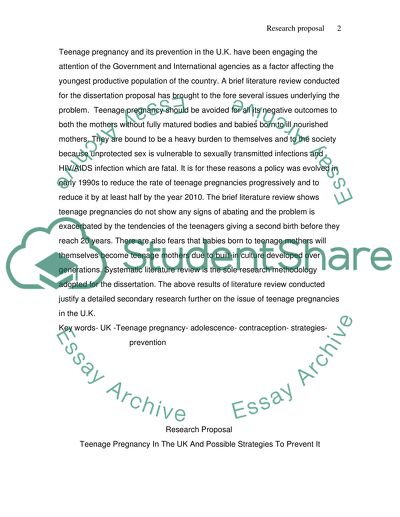Cite this document
(Teenage Pregnancy and Possible Strategies to Prevent It Research Proposal, n.d.)
Teenage Pregnancy and Possible Strategies to Prevent It Research Proposal. Retrieved from https://studentshare.org/sociology/1553285-teenage-pregnancy-in-the-uk-and-possible-strategies-to-prevent-it
Teenage Pregnancy and Possible Strategies to Prevent It Research Proposal. Retrieved from https://studentshare.org/sociology/1553285-teenage-pregnancy-in-the-uk-and-possible-strategies-to-prevent-it
(Teenage Pregnancy and Possible Strategies to Prevent It Research Proposal)
Teenage Pregnancy and Possible Strategies to Prevent It Research Proposal. https://studentshare.org/sociology/1553285-teenage-pregnancy-in-the-uk-and-possible-strategies-to-prevent-it.
Teenage Pregnancy and Possible Strategies to Prevent It Research Proposal. https://studentshare.org/sociology/1553285-teenage-pregnancy-in-the-uk-and-possible-strategies-to-prevent-it.
“Teenage Pregnancy and Possible Strategies to Prevent It Research Proposal”, n.d. https://studentshare.org/sociology/1553285-teenage-pregnancy-in-the-uk-and-possible-strategies-to-prevent-it.


